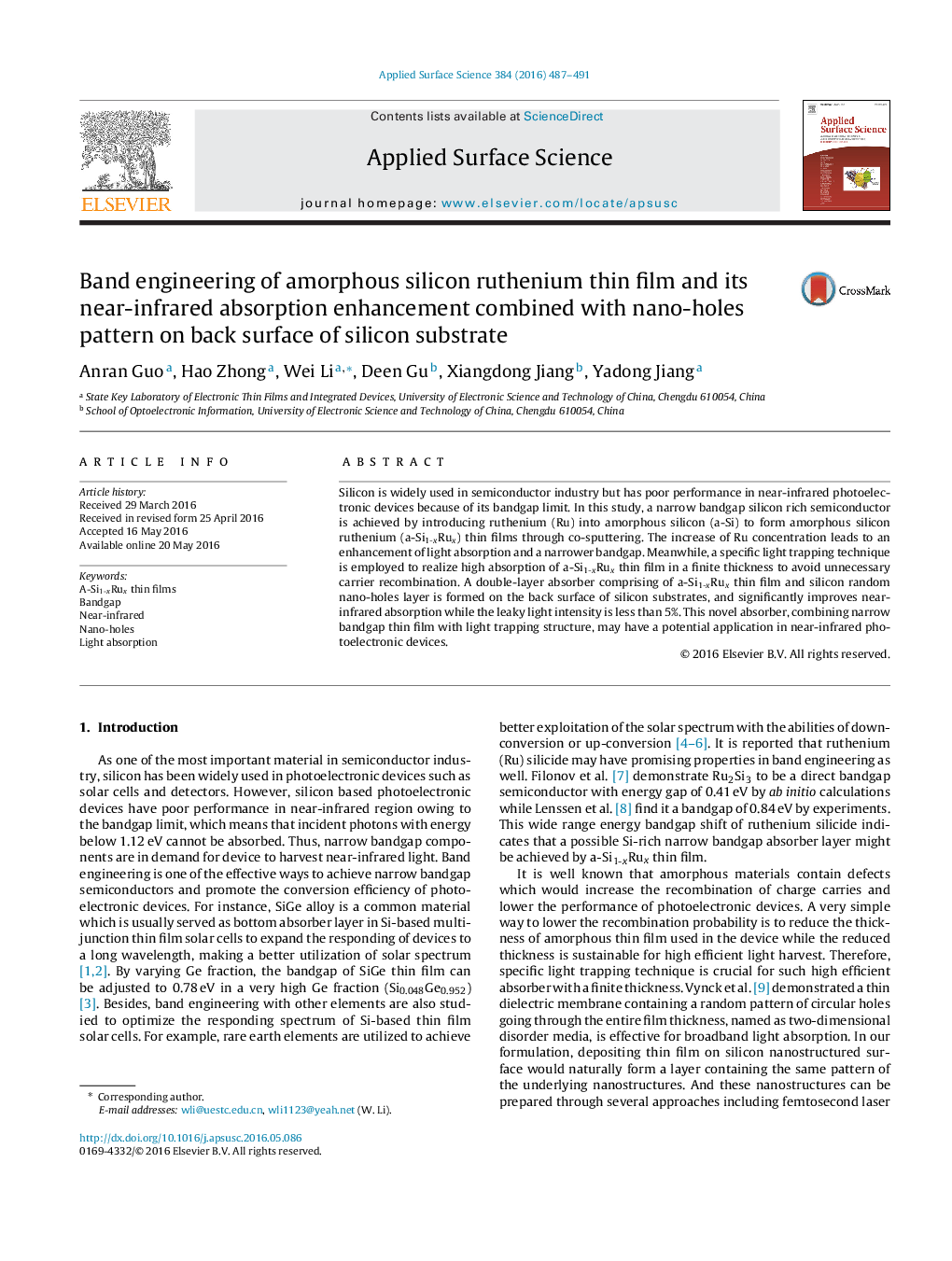| Article ID | Journal | Published Year | Pages | File Type |
|---|---|---|---|---|
| 5354163 | Applied Surface Science | 2016 | 5 Pages |
Abstract
Silicon is widely used in semiconductor industry but has poor performance in near-infrared photoelectronic devices because of its bandgap limit. In this study, a narrow bandgap silicon rich semiconductor is achieved by introducing ruthenium (Ru) into amorphous silicon (a-Si) to form amorphous silicon ruthenium (a-Si1-xRux) thin films through co-sputtering. The increase of Ru concentration leads to an enhancement of light absorption and a narrower bandgap. Meanwhile, a specific light trapping technique is employed to realize high absorption of a-Si1-xRux thin film in a finite thickness to avoid unnecessary carrier recombination. A double-layer absorber comprising of a-Si1-xRux thin film and silicon random nano-holes layer is formed on the back surface of silicon substrates, and significantly improves near-infrared absorption while the leaky light intensity is less than 5%. This novel absorber, combining narrow bandgap thin film with light trapping structure, may have a potential application in near-infrared photoelectronic devices.
Keywords
Related Topics
Physical Sciences and Engineering
Chemistry
Physical and Theoretical Chemistry
Authors
Anran Guo, Hao Zhong, Wei Li, Deen Gu, Xiangdong Jiang, Yadong Jiang,
